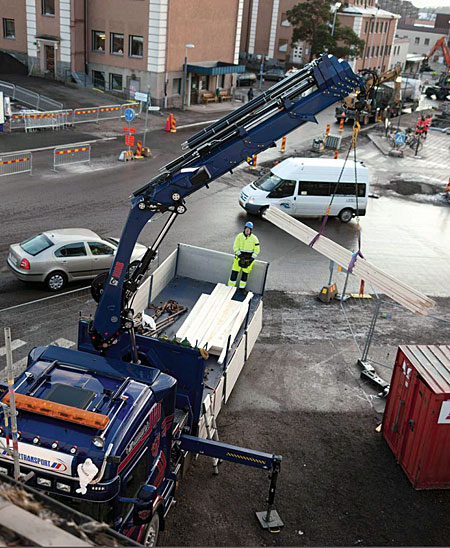The Variable Stability Limit (VSL-V) Provides Impressive Performance in HIAB Crane

Any crane operator that has had the opportunity to operate a HIAB crane that possesses the variable stability limit system (VSL) will be the first to tell you that not all cranes are the same. Having the confidence in knowing that the crane is not at risk of tipping over allows the operator to concentrate on the job at hand without being concerned for the safety of himself or others.
The task of the VSL-V is to keep the truck that the crane is mounted on stable, which it does through intricate state of the art analogue sensors, which monitor the extension of the stabilizer legs. This allows the operator to utilize the maximum capacity of the crane without a risk of danger. This system also allows the crane to handle higher loads in what were once restricted areas, like the front area of the truck that is located next to the cab.
A HIAB crane with this built in stabilizing system opens the door for a great deal of opportunities to operate the crane in many different types of job environments and projects. A good example is just being able to take advantage of more options for crane positioning.
The VSL-V allows for crane operation to its fullest capacity, even where the stabilisers cannot be extended to their fullest potential. An additional and impressive feature that is built into the system is that there is no way that the stability system can be bypassed. By law, safety systems that are built into this type of equipment must function properly. However, in some situations, crane operators will disconnect these systems. With the VSL-V, it is not possible to bypass the system, which maximizes safety and stability.
Whether the crane requirements are for the moving of heavy equipment or for providing transportation for construction equipment, safety of the operators, other personnel and the cargo itself is the priority. With the VSL-V in operation, this is one less concern.
